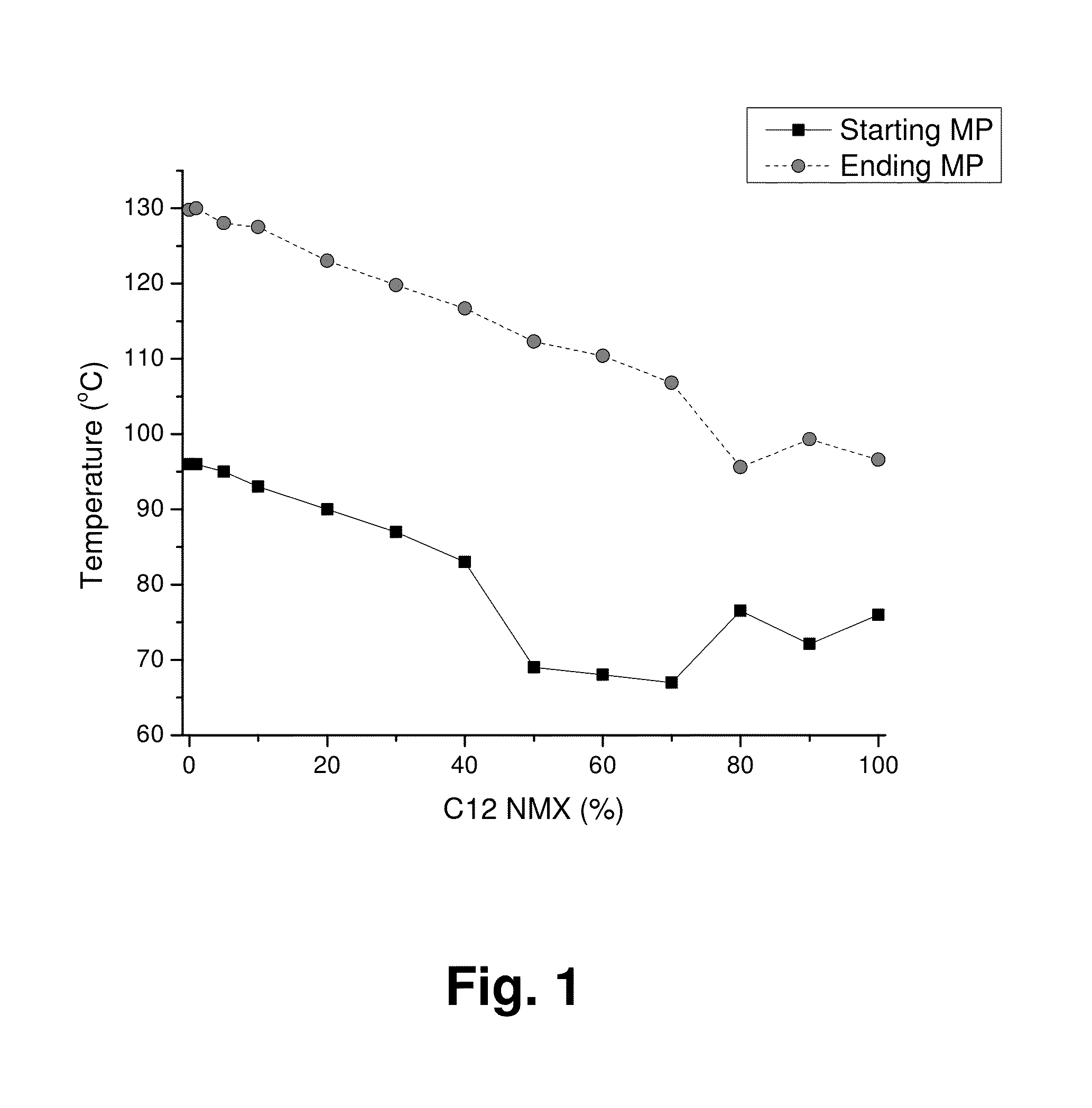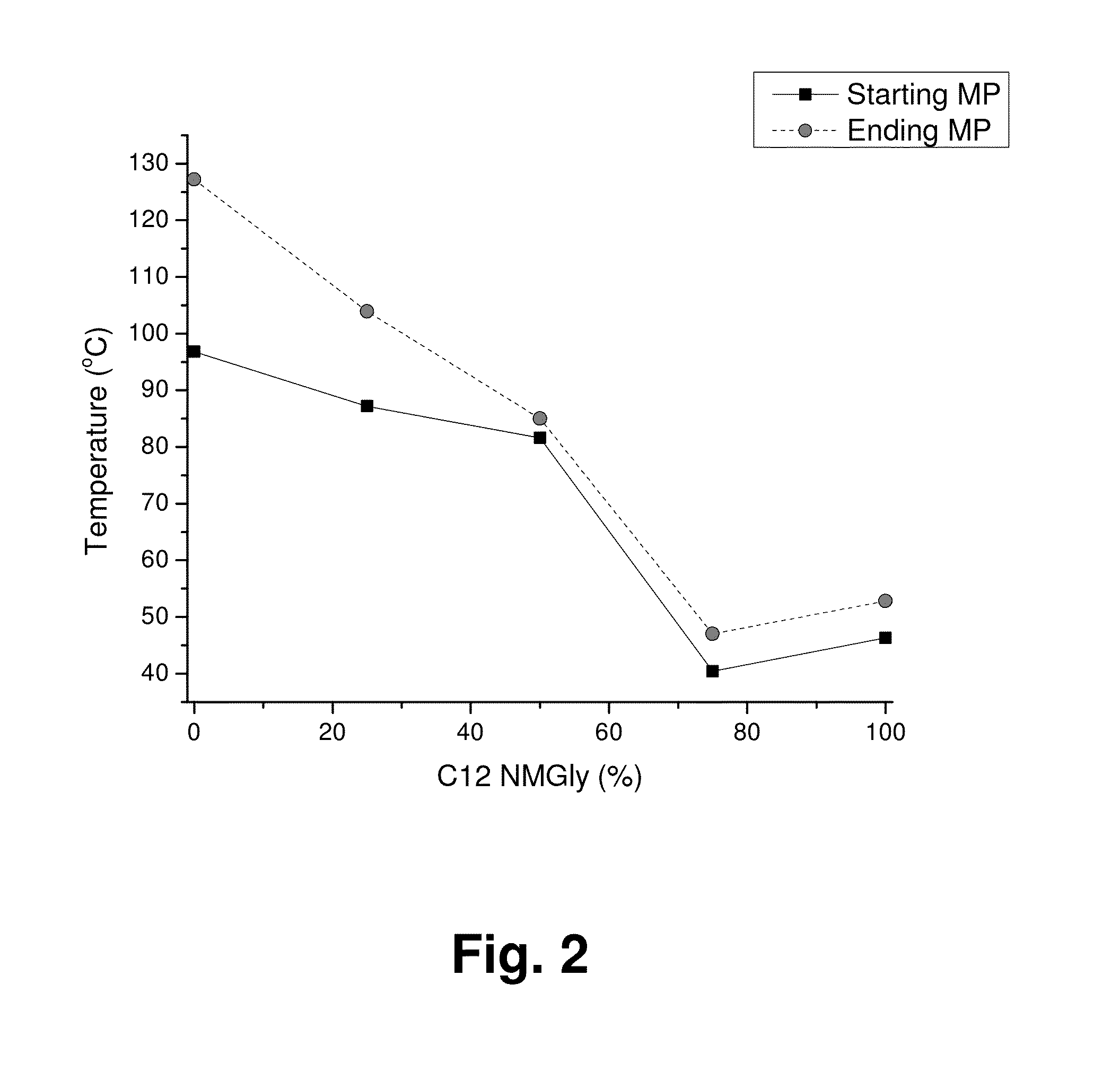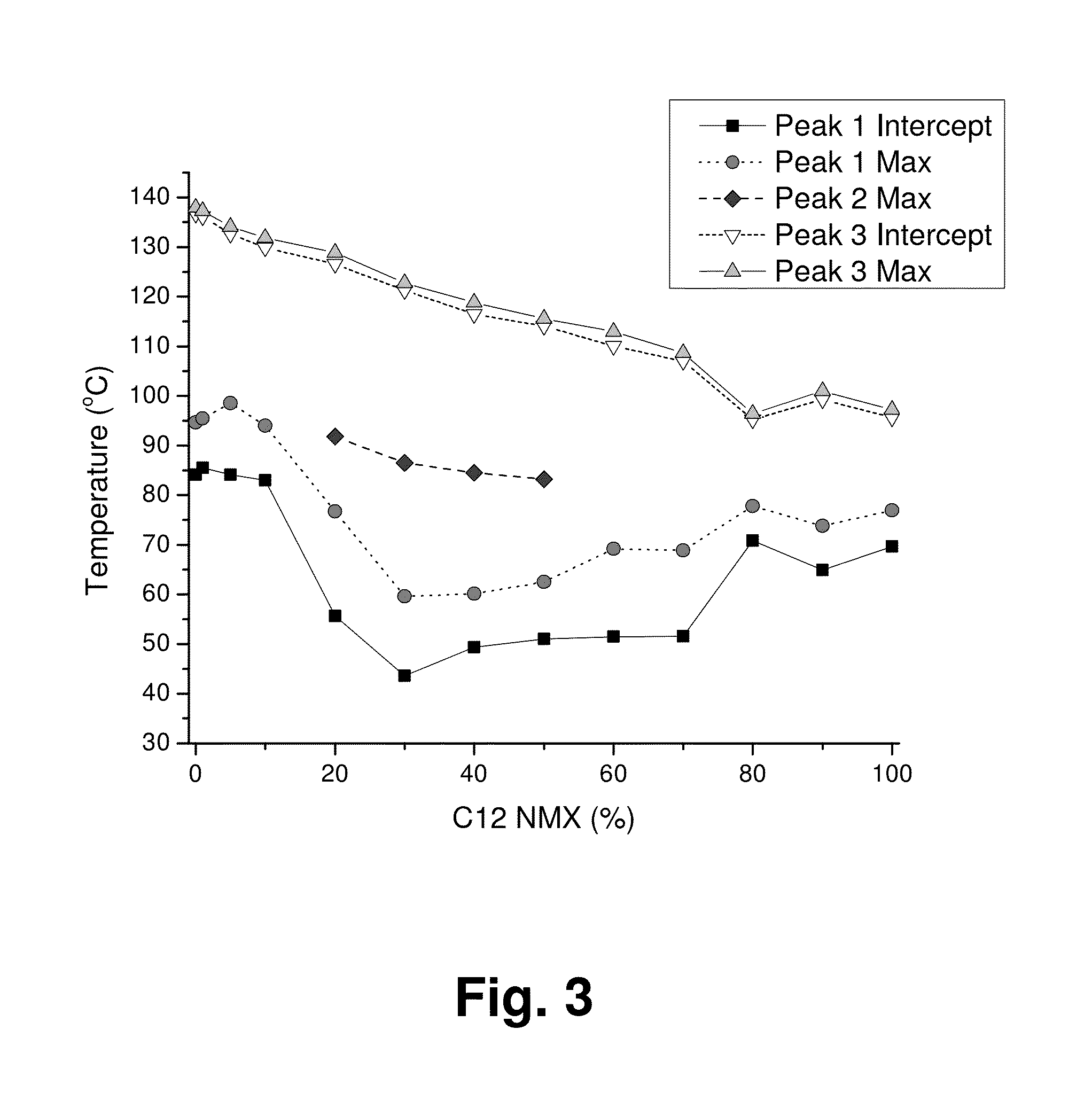Mixed Sugar Compositions
a technology of mixed sugar and compositions, applied in the field of mixed sugar compositions, can solve the problems of less efficient builders, less efficient liquid products, and less efficient use of surfactants, and achieve the effect of improving the thermal properties of individual components
- Summary
- Abstract
- Description
- Claims
- Application Information
AI Technical Summary
Benefits of technology
Problems solved by technology
Method used
Image
Examples
example 1
Synthesis of N-Methylglucamine
[0207]A 160 ml Parr reactor was charged with Raney nickel (2.7 g, 15 wt % based on D-glucose, Grace 4200) and water (20 g). The reactor was sealed, purged three times with 300 PSI N2 followed by three times with 300 PSI H2. The reactor was then charged with 300 PSI H2, at which point stiffing was begun at 400 RPM, and heated to 100-110° C. for 1 hr. The reactor and contents were cooled to ˜10° C. with external cooling; stir rate was slowed to 100 RPM and vented to ˜100 PSI. Next D-glucose was added (45 g 40% aqueous solution, 100 mmoles, Amresco) followed by methyl amine (15.37 g 40% aqueous solution, 150 mmoles, Aldrich) via an HPLC pump at 5 ml / min while maintaining a temperature of around 10° C. Reactor was charged to 450 PSI H2, stir rate was increased to 400 RPM and allowed to warm to ambient temperature over 30 min. The reactor was then externally heated to 35° C. for 18 hrs, 50° C. for 1 hr, 75° C. for 1 hr and finally 100° C. for 1 hr during whi...
example 2
Synthesis of N-Methylxylamine
[0208]The procedure of Example 1 was followed using D-xylose (22.5 g, 150 mmoles, Spectrum) 50% water in place of D-glucose. After stripping water from crude product, the resulting mixture was diluted with ethanol (100 ml) and stripped on a rotary-evaporator at 40° C. A viscous yellow syrup which did not solidify at ambient temperature resulted (24.5 g, 99% yield, 96.4% product by GC using derivatization described in Example 1). This yellow syrup was diluted with methanol (1 weight equivalent) and stored over Type 4A molecular sieves.
example 3
Synthesis of N-Dodecanoyl-N-Methylglucamine (C12-NMG)
[0209]A slurry of N-Methylglucamine (40 g, 205 mmoles, Aldrich), Methyl-Laurate (44.7 g, 208 mmoles, Aldrich) and methanol (17 g, 20 wt % based on reactants) was heated to 80° C. under N2 blanket. Once at temperature, sodium methoxide (4.4 g of 25% in methanol, 20.5 mmoles, Aldrich) was added to reaction. Stirring for ˜30 min at 80° C. yielded a homogenous solution from which the excess methanol was removed by short-path distillation. Heating was continued for an additional 30 min at 80° C. followed by 2 hrs at 90° C. The reaction mixture was then cooled to 50° C., and 200 ml methanol was added over 10 min yielding a homogenous solution. This solution was cooled and allowed to stand at ambient temperature for 18 hrs yielding a white precipitant which was collected by filtration and dried (62.4 g, 80.7% yield, 98.9% product by GC, using derivatization described in Example 1).
PUM
| Property | Measurement | Unit |
|---|---|---|
| mean particle size | aaaaa | aaaaa |
| fracture strength | aaaaa | aaaaa |
| fracture strength | aaaaa | aaaaa |
Abstract
Description
Claims
Application Information
 Login to View More
Login to View More - R&D
- Intellectual Property
- Life Sciences
- Materials
- Tech Scout
- Unparalleled Data Quality
- Higher Quality Content
- 60% Fewer Hallucinations
Browse by: Latest US Patents, China's latest patents, Technical Efficacy Thesaurus, Application Domain, Technology Topic, Popular Technical Reports.
© 2025 PatSnap. All rights reserved.Legal|Privacy policy|Modern Slavery Act Transparency Statement|Sitemap|About US| Contact US: help@patsnap.com



